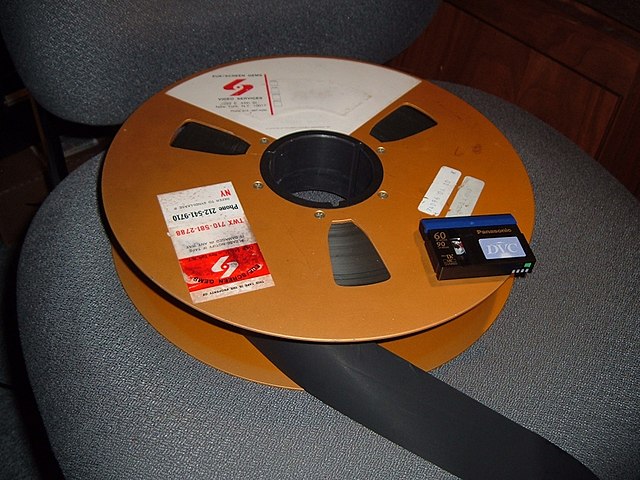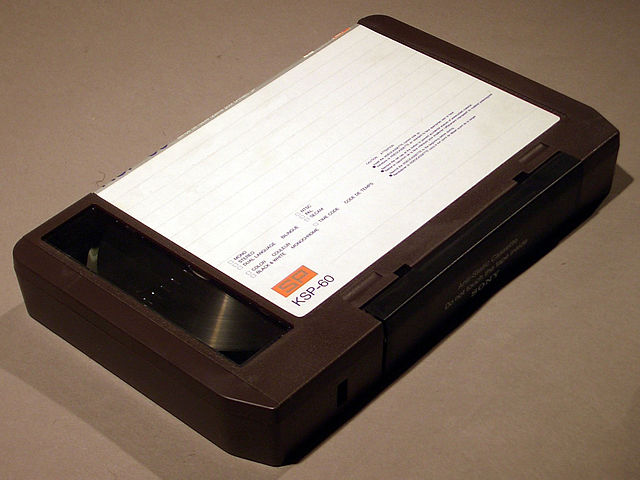2-inch quadruplex videotape was the first practical and commercially successful analog recording video tape format. It was developed and released for the broadcast television industry in 1956 by Ampex, an American company based in Redwood City, California. The first videotape recorder using this format was built the same year. This format revolutionized broadcast television operations and television production, since the only recording medium available to the TV industry until then was Motion picture film.
A reel of 2-inch quadruplex videotape compared with a miniDV videocassette
Ampex VR-2000
The VR 1000-B model (1961)
Ampex VR2000 Amtec, Colortec and Procamp at DC Video, [1],
Videotape is magnetic tape used for storing video and usually sound in addition. Information stored can be in the form of either an analog or digital signal. Videotape is used in both video tape recorders (VTRs) and, more commonly, videocassette recorders (VCRs) and camcorders. Videotapes have also been used for storing scientific or medical data, such as the data produced by an electrocardiogram.
An assortment of video tapes
A 14-inch reel of 2-inch quad videotape compared with a modern-day MiniDV videocassette. Both media store one hour of color video.
U-matic tape
Video 8 (left), VHS (right) and MiniDV (bottom)




![Ampex VR2000 Amtec, Colortec and Procamp at DC Video, [1],](https://upload.wikimedia.org/wikipedia/commons/thumb/5/53/Ampex-Am-Tech-Color-Tech-Proc-Amp.jpg/597px-Ampex-Am-Tech-Color-Tech-Proc-Amp.jpg)


